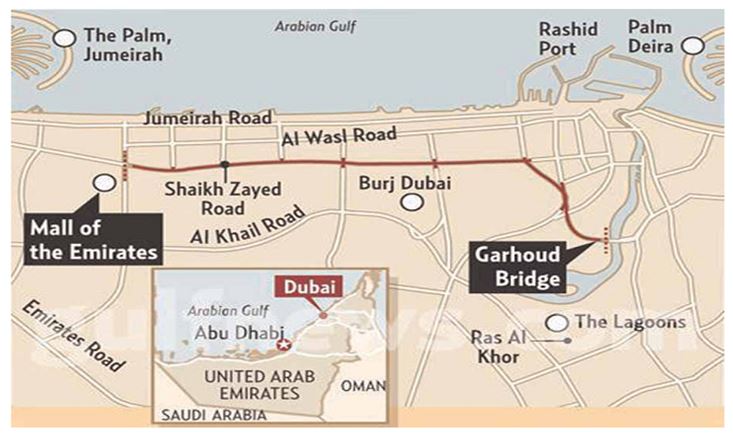Dubai has experienced a rapid population increase that has increased traffic congestion. This is also coupled with the increase in the number of private vehicle owners. According to Jurgen (2008), about 700 new vehicles are registered daily and in every ten people, two persons own a vehicle. The main activity centres in Dubai such as Bur Dubai and Deira are highly decentralised. The travel pattern has changed due to the high demand for land use space, which has forced commercial activities to be located outside existing commercial and residential areas.
The metro is fully automated and consists of the red and green lines that run underground in the city centre and others found on elevated overpasses elsewhere. All trains and rail stations are air-conditioned. The park and ride system is operational as there is the use of feeder buses to connect passengers to the metro. The Nol or ticket buying system is automated and the bus system that is run by RTA has 193 routes. During rush hours, commuters have to wait for more than one hour for the buses. This is due to a large number of people in need of transportation (over 30 million people). The road network such as the Dubai-Sharjah road has several bottlenecks (Bagaeen, 2007, p. 15).
The marine transport in Dubai includes Abras, the waterbus, the water taxi and Dubai Ferry. Abras are one of the oldest water transport means while the waterbus is commonly used for luxury and comfort. Whereas the water taxi is recommended for its comfort and privacy, the Dubai Ferry was specifically launched to uplift the level of marine transit services and it is an important link in the transport system. The marine transport routes and stations are illustrated in fig. 1 below.

One of the cheapest ways to travel is by the use of roads. In Dubai, road transport for tourists is by coaches, car hire, and taxis. Dubai has route coaches that operate in different destinations it has the largest road transport for its tourists. The Dubai buses provide the urban network and are a convenient way to get around offering sightseeing opportunities on the way. Visit Dubai is accountable for promoting tourism partners for entire Britain and the world. Both international and domestic visitors use air and road transport to improve tourism in Britain (RTA, n.d., p. 22).
Transport and road transport services depend on the demand generated by other economic activities. Transportation cost is a component of a transaction that is important in market sand businesses. Modes for transportation and management are the major link to international tourism. Development and accessibility in transportation have been eased travelling. Road Transportation helps tourists to their desired destinations and has an impact on the tourism experience. The advancement and growth in the global airline industry have encouraged major technological innovation. In 1950, jet aircraft were introduced for commercial use in the airline industry. Later, in the 1970s, wide-body jumbo jets were introduced in the Global airline industry. There are two types of fighter aircraft namely, Rocket powered fighters and jet-powered fighters.
References
Bagaeen, S 2007, ‘Brand Dubai: The Instant City; or the Instantly Recognizable City’, International Planning Studies, vol. 12, no. 2, pp. 173–197.
Jurgen, K 2008, Dubai public transport bus master plan – a new era of public transport services in the world’s fastest developing city. Web.
RTA,n.d., Dubai Public Transport Bus Master Plan. Web.